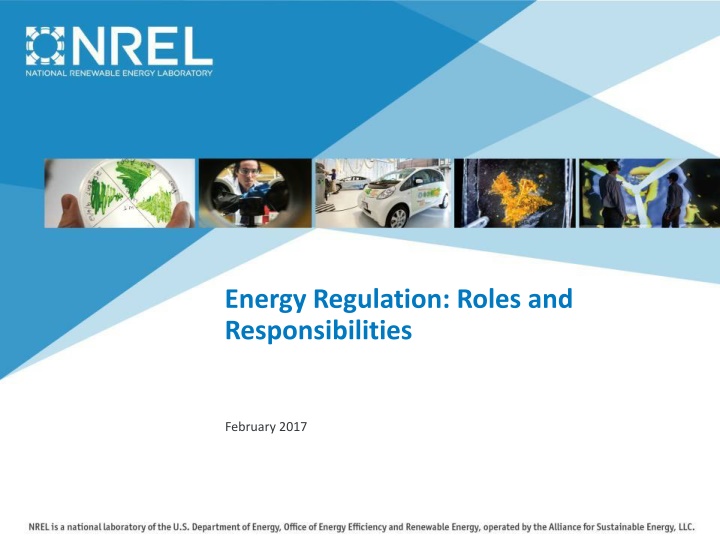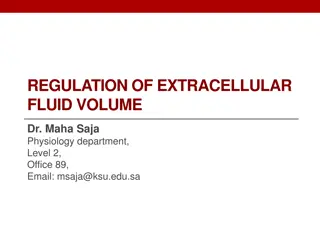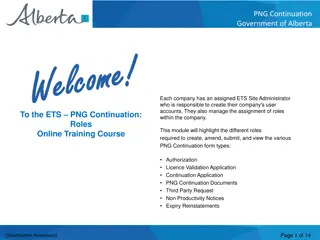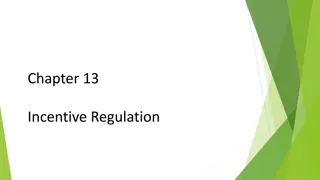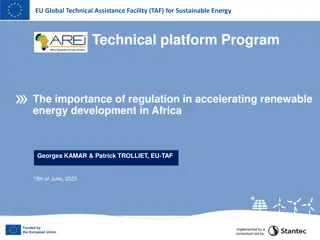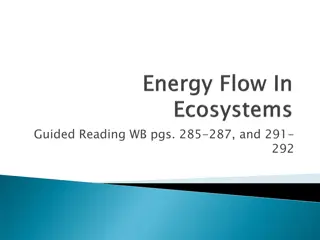Energy Regulation: Roles and Responsibilities in February 2017
Explore the roles and responsibilities of an energy sector regulator, including setting electricity rates, system planning, consumer protection, and market oversight. Learn about centralized vs. distributed regulation benefits and building a decentralized regulatory team. Access references for further knowledge on infrastructure regulation and sustainable energy policymaking.
Download Presentation

Please find below an Image/Link to download the presentation.
The content on the website is provided AS IS for your information and personal use only. It may not be sold, licensed, or shared on other websites without obtaining consent from the author.If you encounter any issues during the download, it is possible that the publisher has removed the file from their server.
You are allowed to download the files provided on this website for personal or commercial use, subject to the condition that they are used lawfully. All files are the property of their respective owners.
The content on the website is provided AS IS for your information and personal use only. It may not be sold, licensed, or shared on other websites without obtaining consent from the author.
E N D
Presentation Transcript
Energy Regulation: Roles and Responsibilities February 2017
Overview Do we need an Energy Sector Regulator? o Regulatory Roles o Strategies for filling the roles Current Status Worksheet Supporting References 2
Common Regulatory Roles Setting reasonable electricity rates that balance profit and public good Planning the electricity system Reliability standards and service quality Consumer protection In competitive markets: o Market oversight o Leveraging market forces Sources: Role of a Power Sector Regulator (RAP), Clean Energy Ministerial 3
Centralized and Distributed Regulation Benefits Centralized Distributed Uniform and transparent processes and decision making Lower transaction cost for project development Increased stakeholder engagement Politically feasible Wider variety of stakeholders for innovative thinking Existing personnel Institutionalized roles 4
Who is regulating now? Regulatory Role Agency Filling Contact Person and information Legal supports Notes Source: adapted from http://www.eere.energy.gov/islandsplaybook/pdfs/islands-playbook.pdf 5
Building the Regulatory Team (decentralized) Similar to broad stakeholder matrix, understanding where to involve players in the regulatory structure is critical to success of the effort. 6
References The Body of Knowledge on Infrastructure Regulation (http://regulationbodyofknowledge.org/) from the Public Utilities Research Center provides links to a large library addressing the regulatory treatment of infrastructure, an extensive glossary, and self-testing features to facilitate learning. The Energy Regulators Regional Association (ERRA) E-Library (http://www.erranet.org/Library) provides information and data related to energy regulation The Sustainable Energy Regulation and Policymaking for Africa website (http://africa-toolkit.reeep.org/) from the United Nations Industrial Development Organization contains a variety of information on shaping energy policy. Encouraging Renewable Energy Development: A Handbook for International Energy Regulators (National Association of Regulatory Utility Commissioners 2011). This guide seeks to help international regulators navigate the policy landscape for large scale renewable deployment. 7
